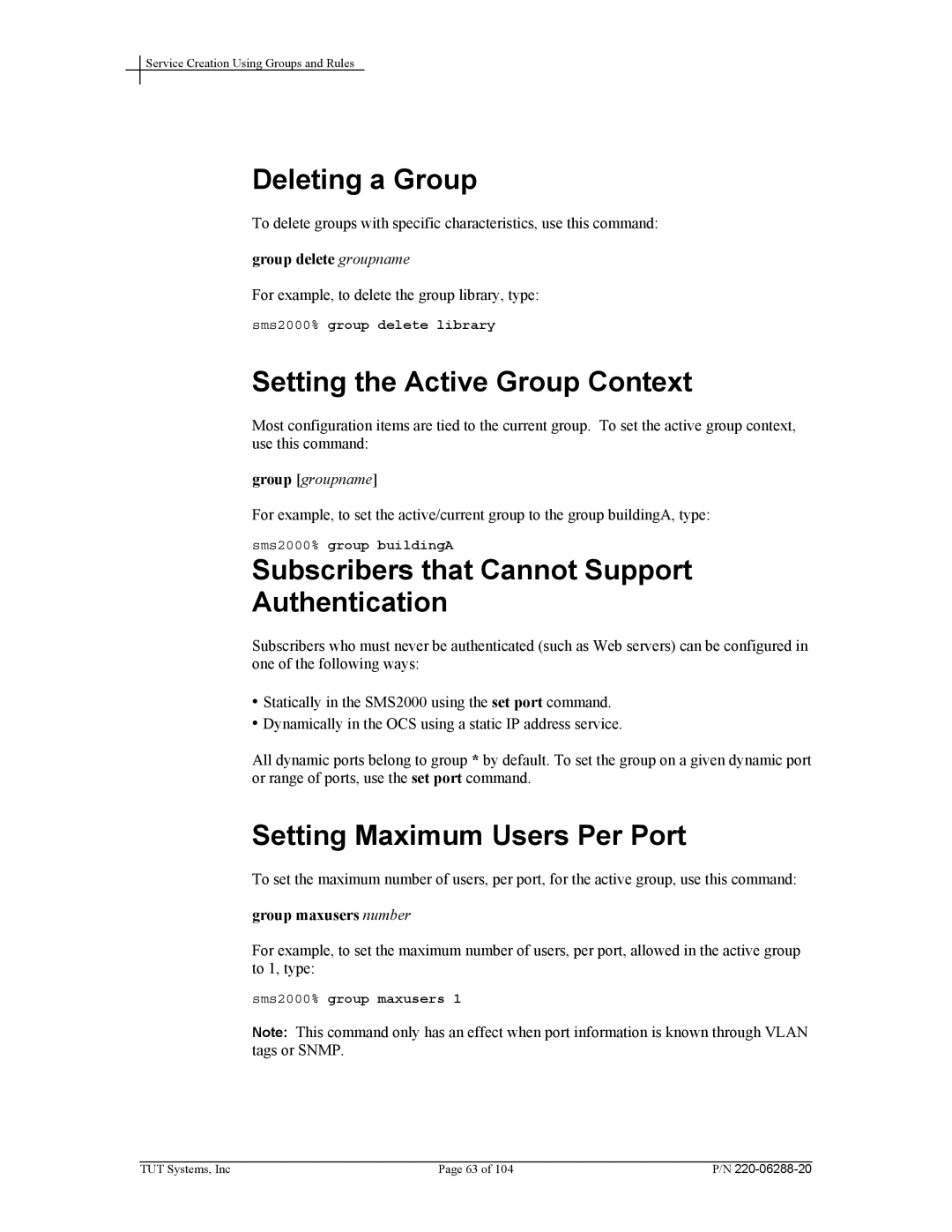
Service Creation Using Groups and Rules
Deleting a Group
To delete groups with specific characteristics, use this command:
group delete groupname
For example, to delete the group library, type:
sms2000% group delete library
Setting the Active Group Context
Most configuration items are tied to the current group. To set the active group context, use this command:
group [groupname]
For example, to set the active/current group to the group buildingA, type:
sms2000% group buildingA
Subscribers that Cannot Support
Authentication
Subscribers who must never be authenticated (such as Web servers) can be configured in one of the following ways:
•Statically in the SMS2000 using the set port command.
•Dynamically in the OCS using a static IP address service.
All dynamic ports belong to group * by default. To set the group on a given dynamic port or range of ports, use the set port command.
Setting Maximum Users Per Port
To set the maximum number of users, per port, for the active group, use this command:
group maxusers number
For example, to set the maximum number of users, per port, allowed in the active group to 1, type:
sms2000% group maxusers 1
Note: This command only has an effect when port information is known through VLAN tags or SNMP.
TUT Systems, Inc | Page 63 of 104 | P/N |
